How Long After Eating Would You Know if You Had Food Poisoning
How climate change poisons our food
(Image credit:
SHansche/Getty Images
)
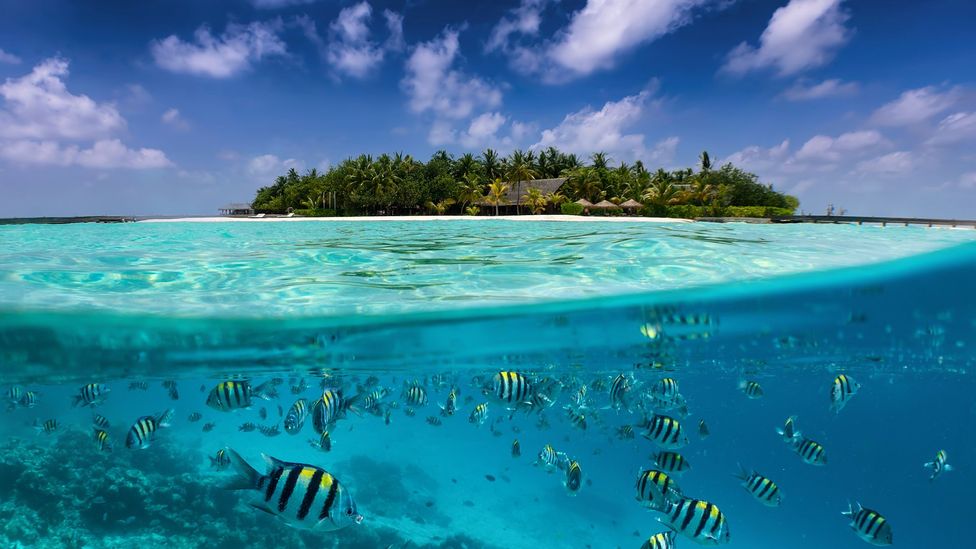
At that place'southward no cure for a mysterious type of food poisoning known as ciguatera. Just equally our planet warms, information technology's likely to go much more common.
O
One thing I've come up to dear about travelling around Mexico is that you're rarely far from a toilet. Yep, information technology volition cost you lot 5 pesos (£0.20), but it's a small price to pay for a few folded squares of toilet paper, a clean seat and peace of heed (and bottom). Only what I didn't know equally I explored Oaxaca concluding May, spending a few pesos to slowly, sweatily tour the bathrooms of the urban center's cathedral, a few ceramics shops and the sprawling Mercado de Abastos, was that I didn't have a typical, run-of-the-mill case of food poisoning. I had what I now lovingly call "my freaky fish poisoning".
Some 12 hours after that starting time wave of nausea, equally I was sitting lone in my holiday rental, the numbness in my fingers and toes crawled up to my wrists and ankles. The odd tingling felt as though I'd woken upwardly in an odd position and my hands and feet were asleep – just instead of gradually improving and returning to normal, the numbness but steadily connected. Information technology suddenly occurred to me that if it persisted, I might struggle to call for aid past the fourth dimension I needed it. So I did the only rational matter I could think of at the time: I walked down the street for water ice cream.

The writer kickoff became violently ill while exploring Oaxaca'due south sprawling Mercado de Abastos (Credit: Orbon Alija/Getty Images)
The culprit, I would somewhen find out, was ciguatera: a strange, specific form of food poisoning stemming from a toxin in certain types of fish. It is acutely misirable for 12 hours and has effects that often final months and sometimes years. There'south no way to screen fish for it and no known cure, and it's likely to get far more common as climate change warms our oceans and causes more storms, and more than widespread as more fish is exported around the globe.
Given that I wasn't exactly eating a ton of seafood as I chowed through the inland city of Oaxaca's corn-based specialties – tlayudas, tetelas and tamales– I can have an educated guess and blame the illness on the ceviche I ordered from a high-terminate eating place in the city centre. But, as in all food poisoning cases, without lab testing that specific dish, there's no way to know for sure. And as I would soon learn, being aware of the danger would accept been unlikely to stop me getting it.
As someone who views food every bit an attainable entry point to a local culture, I consider eating annihilation and everything I encounter to be an informative and delightful mode to learn about a place and its people. I've never exercised caution around what I eat while I travel – beyond smartly skipping an oddly grey hamburger on a regional South-East Asian airline that felled my hubby for a few days. This has, of class, bitten me once or twice, normally resulting in a rough dark, though nothing serious. Merely standing in El Llano Park that afternoon, licking my scoop of zapote negro (a persimmon-like black fruit) ice foam, I had no idea that months after I would still be feeling the repercussions: rolling around in my bed in Seattle, unable to sleep because of the numbness and tingling in my fingers.
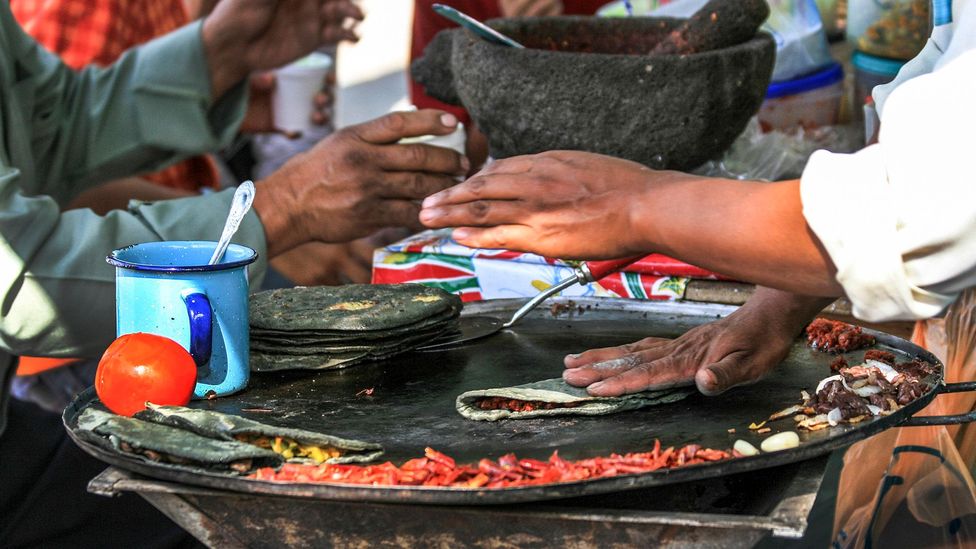
Food tin can be a great entry point to learn about a local civilisation while travelling (Credit: Ali Çobanoğlu/Getty Images)
Co-ordinate to Dr Mindy Richlen, a research specialist at Wood Hole Oceanographic Institution who studies harmful algal blooms, ciguatera poisoning comes from eating fish contaminated with ciguatoxins, which come from a tropical dinoflagellate (tiny unmarried-prison cell organism) that lives on microalgae growing, mostly, on dead coral. More than plainly: dead reefs breed infected fish nutrient, and humans get ill when they swallow the fish that swallow it. While ciguatera initially presents itself every bit standard food poisoning, it eventually morphs into numbness in the fingers and toes that recurs for months or even years, and sometimes causes a switching of hot and cold sensations (a side result I thankfully lucked out of, simply which leads people to think their cold soda is called-for them or causes them to drink far-too-hot coffee).
Despite rising bounding main temperatures and related atmospheric condition phenomena bringing ciguatera to the headlines, the toxin is extremely mutual and has been effectually for a long time. Dorsum in the 4th Century BC, Alexander the Peachy supposedly forbade his soldiers to consume fish because of an illness thought to be ciguatera. It was fascinating to read the 18th-Century clarification by i of Captain James Cook'due south crewmates of what was likely ciguatera poisoning as they explored the Due south Pacific aboard the HMS Revolution and compare it to my ain. "The fingers, legs and toes, felt often equally if benumbed: nay the whole limbs became in some mensurate paralytic." The following decade, Vice-Admiral William Bligh may have contracted ciguatera afterward eating mahi mahi while he and his loyalists were stranded on an island post-obit the storied Wildcat on the Bounty.
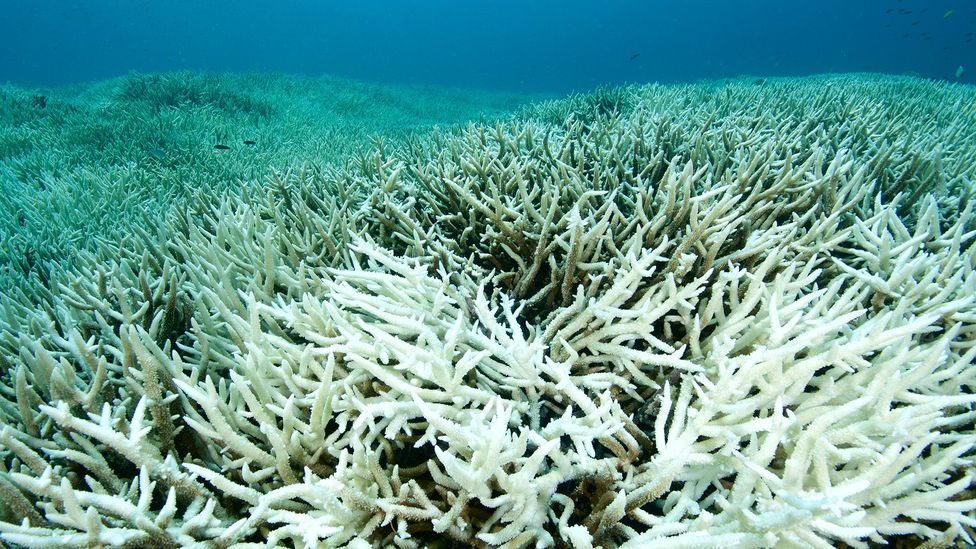
The illness is likely to get much more common as climatic change destroys coral reefs (Credit: Rainer von Brandis/Getty Images)
The Centers for Affliction Command and Prevention (CDC) states that up to 50,000 cases of ciguatera poisoning are reported annually worldwide, merely nobody really knows how common information technology is, because, similar me, many people don't realise what they take until long after they've consumed the fish. Plus, the but mode to truly ascertain if the fish is contaminated is by testing it in a lab. Ciguatera has been blamed for a tiny number of deaths over the years – by and large due to complications stemming from the effects of the toxin on the neurological and digestive organisation – but it's rarely fatal.
You may as well be interested in:
• Is this the future of underwater exploration?
• Mexico City'south 'walking fish'
• A sauce made from flying ants
"Ciguatera is often overlooked," said Richlen. "If you go in the literature, at that place will be these wild estimates similar 'l to 500,000 people are poisoned per year,'" considering it's hard to actually know who has information technology. Fish carrying the ciguatoxin don't look any different; in that location'south no feasible way to test fish for it; and neither cooking nor freezing the fish kills it. In that location'southward also no known cure or antidote for ciguatera poisoning.
The mean solar day after my poisoning, numbness lingered in my hands and feet equally I boarded a airplane to United mexican states City. Just it soon faded and I didn't remember most information technology again until a few weeks later. Lying in bed subsequently a lavish sushi meal on the Baja Peninsula, I felt just similar that night in Oaxaca, minus the digestive problems. So, like any practiced millennial, I consulted Dr Google to meet what could be going on and finally landed on data about an illness that matched my symptoms. The timing of my initial digestive symptoms in Oaxaca and the related numbness tracked perfectly, but the clinching factor in my self-diagnosis was when I got to the segment about long-term effects.
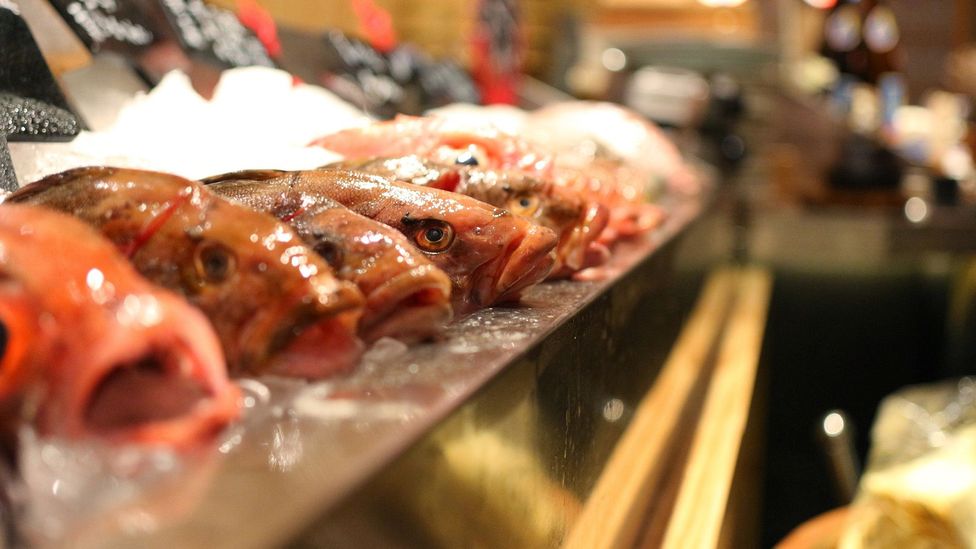
Fish conveying ciguatera don't await whatsoever different; there'southward no feasible style to test for it; and neither cooking nor freezing the fish kills it (Credit: JHLee/Getty Images)
The online info noted that recurrent episodes of the neurological effects of ciguatera – such as numbness – are thought to exist tied to eating certain foods, including one of my personal sushi favourites, reddish snapper. A fun piece of the puzzle is that nobody really knows which foods, though fish is a likely one, particularly reef fish. Various sources list peanuts, craven, pork, alcohol, caffeine and even exercise as likely triggers. Oddly, in the months since I first contracted ciguatera, I've found Sichuan food to be a detail one for me, though I take no thought what specific ingredient that might be related to.
Most diagnoses of ciguatera are based on the blazon of fish the person eats and the region where the fish was caught. Information technology'southward especially common in the tropical Caribbean, Indian and Pacific oceans – the kind of sunshine-filled, beach-boasting places that pepper travellers' dreams – and from eating reef fish similar snappers and groupers. But afterwards consulting my photograph of the card at the high-stop Oaxaca restaurant where I think I contracted ciguatera, it just revealed that I ordered the "fish of the day", served as a ceviche and marinated in "recado negro" (black chilli sauce), served with cucumbers, red onions and habanero peppers.

Ciguatera is peculiarly common in tropical climates where coral reefs are prevalent (Credit: SHansche/Getty Images)
While the latitudes of Oaxaca fall within the CDC's guidelines of where virtually poisonings take place (between 35°Southward and 35°Northward), no instances take been officially reported here. Given the unknown origin of the fish I ate and the clarity of my symptoms, Richlen agreed that it was likely ciguatera. But since there's naught that tin be done about it once yous take it, an official diagnosis (were there a way to test for it) would be pretty useless.
To Richlen, the lack of information well-nigh the fish that sickened me highlights one of the biggest bug with ciguatera. "With the increased consign of fish around the world, you're going to have people [contracting it] in [landlocked] places like the [American] Midwest," she said. Richlen cites a 2004 outbreak at a Hong Kong fish market from bringing in fish from the South Pacific. According to the Un, from 1976 to 2016, the amount of seafood exported around the world for human consumption grew past 514%, and it is projected to abound another 24% by 2030. Another researcher working on ciguatera at Florida Gulf Coast University, Dr Mike Parsons, mentions that he fielded a telephone call from a lawyer whose clients contracted ciguatera from eating barracuda in New York Urban center.
Parsons also believes that the areas where people are contracting ciguatera are changing due to another reason: climatic change. "I remember people volition be communicable toxic fish in areas [where] ciguatera was not prevalent before." Richlen and Parsons explained that warming ocean temperatures have changed the range of where ciguatera grows: the h2o has become likewise warm for the toxic dinoflagellate to grow in places where information technology in one case did, while it now flourishes farther north where it used to be as well cold. In places similar the Gulf of Mexico, Parsons explained, the tropical and subtropical dinoflagellate used to die back in winter, simply now stays and grows yr-circular.
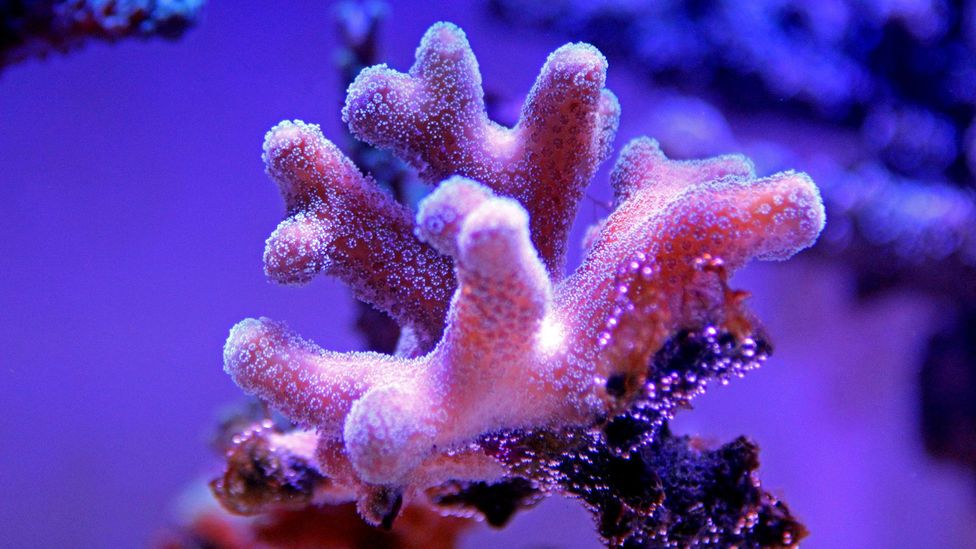
Ciguatera is contracted when people eat fish that take fed on algae growing on damaged coral (Credit: vojce/Getty Images)
Another chemical element of prime number ciguatera growth, though, is Parsons' specific expanse of expertise: the relationship between the prevalence of ciguatoxins (and the marine life conveying it) and damaged coral reefs. Whether due to bleaching, increased hurricane activity or reef degradation from human activities, he said, "I would expect to come across ciguatera flaring up every bit reef health declines." Currently, he's comparing the distribution of the toxic dinoflagellates in areas of the Bahamas that were hit and spared past Hurricane Dorian in Baronial.
Despite the ongoing report of ciguatoxins, there's still non a ton of reliable information almost why expressionless reefs breed them. According to Richlen, dinoflagellates live on a type of algae that thrives in dead reefs, and this algae is the preferred food for many reef fish. The fish think they wandered into the marine version of a candy store, goble up the toxin-laced algae and spike the likelihood of humans contracting ciguatera. In the terminal xxx years, l% of all of the world's corals accept died due in large function to climage change, and some predictions say 90% may die in the next century.
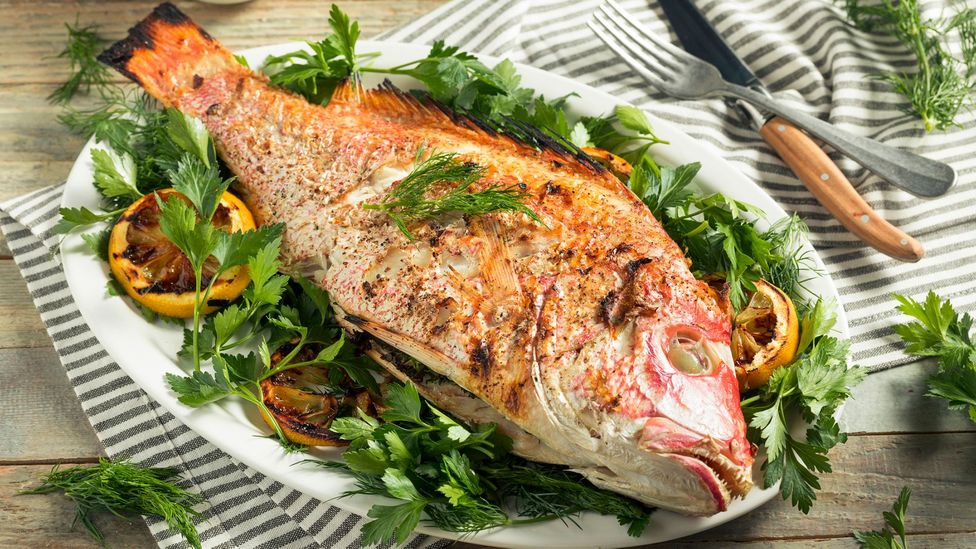
Experts recommend avoiding reef fish, similar snapper, to reduce the take chances of ciguatera (Credit: bhofack2/Getty Images)
As someone who travels around many of the areas where ciguatera is endemic, I asked Richlen and Parsons if at that place'south annihilation they would avoid when travelling help prevent contracting ciguatera. Both immediately cited barracuda, a prime ciguatera culprit because information technology eats the smaller, contaminated reef fish. But Richlen recommended non eating reef fish, in general, like snapper and grouper. "Reefs are under so much pressure from a variety of sources, including overfishing. I probably would merely skip it for multiple reasons," she said. Parsons said that he knows of resorts on St Thomas and St Croix, among other islands, that become so far as to import their fish. "They won't use the local fish because they don't trust it enough, they don't want their clientele to get sick."
He also noted out that bigger fish are more likely to accumulate the toxins that deport the disease, and so smaller fish are likely to be safer to swallow. "The important affair is to know what fish you're eating and where it'south caught" and to know what fish in the area might deport it, he said. Richlen sent me a few posters from around the world that warn people about problematic fish, such as behemothic sweetlips in Fiji or yellow jack in Guadeloupe, and Parsons suggested talking to local fishermen about which fish are safe as they volition know best.
Nearly eight months later, I nevertheless get recurrences. I no longer worry about my hands becoming permanently paralysed or that it might exist fatal, every bit I did on the first day. Instead, I laugh virtually my freaky fish poisoning and curiosity at how little we know, as eaters, about what we swallow, especially while travelling. Even armed with my newfound noesis about ciguatera, I realise that however none of this would have helped me. I didn't know what fish I was eating. I didn't know where it came from. All I knew was that information technology was good, and I know now that I'd probably do it again. Of course, since getting ciguatera once makes you more susceptible to the toxin, I probably will become information technology again.
Join more than three million BBC Travel fans past liking u.s. onFacebook, or follow u.s.a. onTwitter andInstagram.
If you lot liked this story,sign upwardly for the weekly bbc.com features newsletter called "The Essential Listing". A handpicked selection of stories from BBC Futurity, Culture, Worklife and Travel, delivered to your inbox every Friday.
Source: https://www.bbc.com/travel/article/20200129-how-climate-change-poisons-our-food
0 Response to "How Long After Eating Would You Know if You Had Food Poisoning"
Post a Comment